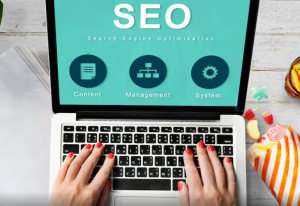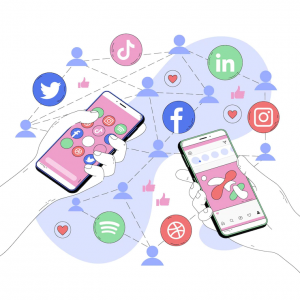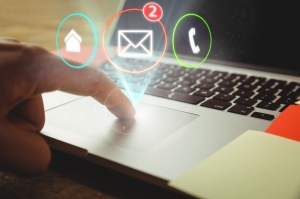A logo is not just a small graphic or a piece of art. It's the face of your brand. A well-designed logo plays a crucial role in branding, helping businesses build their identity and stand out in the market. Whether you are a startup or an established brand, designing a logo is one of the most important steps in creating your visual identity.
In this comprehensive guide, we will walk you through the entire logo design process—step by step. From understanding the importance of a logo to the latest trends, we'll also provide actionable tips to ensure your logo design is effective, timeless, and suitable for all platforms. Whether you're creating a logo yourself or working with a professional designer, this guide will help you make the right decisions.
Table of Contents:
- What is a Logo and Why is it Important?
- Key Elements of a Successful Logo
- The Logo Design Process: Step by Step
- Choosing the Right Logo Type
- Latest Logo Design Trends in 2025
- Common Logo Design Mistakes to Avoid
- How to Test and Finalize Your Logo
- Best Practices for Logo Use Across Platforms
- Real-World Logo Design Examples
- Conclusion
1. What is a Logo and Why is it Important?
A logo is a visual symbol that represents your brand, business, or product. It can include words, letters, symbols, or a combination of all three. In essence, a logo serves as the face of your company. It's the first thing people notice when they interact with your business, and it sets the tone for your overall brand identity.
Why Logo Design is Important:
- First Impressions: Your logo is the first thing customers will associate with your business. A well-designed logo can create a positive first impression and establish credibility.
- Brand Identity: Your logo is an integral part of your brand's identity. It should reflect your business's core values, mission, and message.
- Memorability: A strong logo helps make your brand memorable, allowing customers to recognize your brand easily across various platforms.
- Consistency: Consistent use of your logo in different marketing materials ensures brand recognition and builds trust over time.
2. Key Elements of a Successful Logo
Designing a successful logo involves various key elements that contribute to its effectiveness and visual appeal. These elements help ensure that the logo is simple, memorable, timeless, and scalable.
Simplicity
Simplicity is a critical component of logo design. A simple logo is easy to recognize, and it ensures that your logo remains versatile and scalable across multiple sizes and platforms. Overcomplicating a logo with excessive details can confuse the viewer and dilute its impact.
Memorability
A good logo should be memorable, allowing customers to recall it even after only one or two encounters. The logo should be distinctive and stand out from competitors in your industry.
Timelessness
A logo should withstand the test of time. Trends come and go, but a timeless logo will remain effective and relevant for years to come. Avoid chasing fleeting design trends that may make your logo look outdated.
Versatility
A great logo must work across a wide range of applications, from large billboards to social media icons. It should look just as good in black and white as it does in full color, and it should be scalable to fit various sizes without losing clarity.
Appropriateness
The logo should be appropriate for the type of business it represents. For example, a tech company might opt for a clean, modern design, while a children's toy company may choose something playful and colorful.
3. The Logo Design Process: Step by Step
Creating a logo is a thoughtful and deliberate process. Whether you're designing it yourself or working with a designer, understanding the steps involved can ensure the final product meets your expectations.
Step 1: Research and Conceptualization
Before you start designing, it's important to conduct thorough research. This research includes understanding the company's mission, target audience, and competitors. Ask yourself:
- What message do I want my logo to convey?
- Who is my target audience?
- What are the logo styles used by competitors?
Step 2: Sketching Ideas
Once you've gathered your research, it's time to start brainstorming. Begin by sketching your ideas on paper. Don't worry about perfection—this is about exploring concepts and visualizing potential designs.
Step 3: Refining the Concept
After sketching out ideas, choose the strongest ones and refine them. At this stage, you'll focus on improving the proportions, fonts, and color schemes.
Step 4: Digital Design
Use graphic design software like Adobe Illustrator or Canva to bring your sketches to life. Start creating vector-based designs to ensure the logo can be resized without losing quality. Work with color palettes and typography to fine-tune your design.
Step 5: Feedback and Revisions
Once you've created a design, seek feedback from others. Gather opinions from your team or target audience to gauge how well the logo represents the brand. Based on feedback, make any necessary revisions.
Step 6: Finalization and Testing
The final step is to ensure that your logo works across various platforms and formats. Test how it looks in black and white, as well as different sizes. Make sure the logo remains recognizable and legible at both large and small scales.
4. Choosing the Right Logo Type
When designing a logo, you'll need to decide on the logo type. The main types of logos are:
- Wordmark: A logo consisting of the brand's name in a custom font. Example: Google, Coca-Cola.
- Pictorial Mark: A logo that uses a symbol or icon to represent the brand. Example: Apple, Twitter.
- Abstract Mark: A non-representational graphic symbol that conveys an idea or concept. Example: Nike Swoosh.
- Combination Mark: A logo that combines both text and an icon. Example: Adidas, Burger King.
- Emblem: A logo where the text is inside a symbol or icon, often used by schools, organizations, and governments. Example: Starbucks, Harley-Davidson.
5. Latest Logo Design Trends in 2025
Logo design trends evolve constantly. Keeping an eye on the latest trends can help you design a modern and relevant logo. Here are some of the top logo design trends to watch out for in 2025:
Minimalism
Minimalism continues to be a strong trend in logo design. Simple shapes and clean lines ensure that logos are easy to recognize and versatile.
3D Design
Incorporating three-dimensional elements into logos adds depth and a modern touch. Brands are moving beyond flat designs to experiment with more visually dynamic logos.
Geometric Shapes
Geometric logos are becoming increasingly popular, especially for tech brands. Triangles, squares, and circles help create a clean, modern look.
Responsive Logos
With the rise of mobile devices, logos must be adaptable to different screen sizes. Responsive logos adjust to various formats to ensure legibility and clarity.
Custom Typography
Many brands are opting for custom fonts and typefaces to create a unique, identifiable logo. This trend is particularly popular among startups and creative businesses.
6. Common Logo Design Mistakes to Avoid
While designing a logo, it's easy to fall into certain traps. Here are some of the most common mistakes you should avoid:
- Overcomplicating the Design: Keep it simple. A cluttered logo is hard to remember and won't work across multiple platforms.
- Using Trendy Fonts: Avoid using overly trendy or overly decorative fonts that can make your logo look outdated quickly.
- Neglecting Scalability: Test your logo at various sizes to ensure it remains effective when resized.
- Ignoring Brand Identity: Your logo should represent your company's values and target audience. Avoid designs that don't reflect your business's core message.
7. How to Test and Finalize Your Logo
Once your logo is ready, it's essential to test it in various contexts:
- Print vs. Digital: How does your logo look on business cards, brochures, or websites? Ensure the logo is adaptable to both digital and print platforms.
- Monochrome: Test your logo in black and white to ensure it remains effective when used without color.
- Scalability: Resize your logo to see if it remains legible and clear at different sizes.
- Feedback: Gather feedback from customers or colleagues to see if the logo conveys the intended message.
8. Best Practices for Logo Use Across Platforms
After designing your logo, you'll want to ensure it's consistently used across all platforms. Here are a few best practices:
- Consistency: Maintain consistent use of colors, fonts, and proportions across all media.
- Clear Spacing: Ensure that there's enough clear space around the logo to make it stand out.
- File Formats: Use scalable vector formats (such as AI or SVG) for the highest quality across different platforms. PNG and JPG are also useful for web use.
- Adaptation: Customize your logo for various media, such as social media icons or website headers.
9. Real-World Logo Design Examples
Looking at real-world examples of successful logos can provide inspiration and insight into how effective design works. Some iconic logos include:
- Apple: Simple, elegant, and timeless.
- Nike: The Swoosh is minimal but instantly recognizable.
- McDonald's: The golden arches are synonymous with fast food.
These logos are successful because they are simple, memorable, and timeless.
10. Conclusion
Logo design is a crucial aspect of brand building. A great logo helps establish your identity, builds brand recognition, and creates trust with your customers. By following the right design process and avoiding common mistakes, you can create a logo that stands out in your industry.
Whether you're working with a professional designer or designing your logo yourself, understanding the key elements, trends, and best practices can make the process smoother and ensure a logo that lasts.





